1.1 For port personnel
1.1.1 Contact information
|
Nordics Global technical support +358 207 688111
North America Global technical support +1 715 800 9150
|
Europe Global technical support +358 207 688112 |
China Zhao Rujin
Brazil These times are UTC-3
|
1.1.2 For port personnel
IMPORTANT: Before moving the machine at a port, closely watch the video instructions presented on these pages. The language of the subtitles for the video instructions can be changed from “subtitles” in the “settings” menu at the bottom of the video.
1.2 Lifting and fastening the machine for transportation
| Machine model | Machine weights starting from without optional equipment: |
| Wisent | 16 300 kg |
| Elk 8W | 17 700 kg |
| Buffalo 8W | 18 600 kg |
| Buffalo King 8W | 20 600 kg |
| Elephant | 22 000 kg |
| Elephant King | 22 900 kg |
| Bison Active Frame | 22 000 kg |
| Mammoth | 27 500 kg |
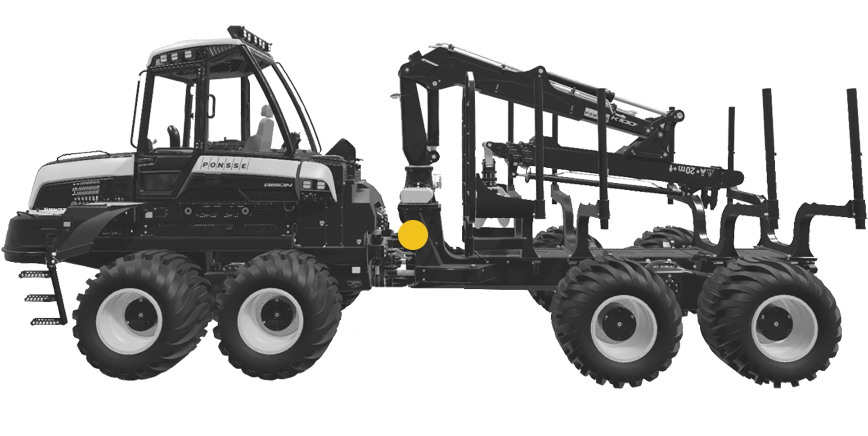
Centre of gravity
Active Seat (optional equipment)
Before use, ensure that the seat is not in its extreme forward
or backward position.
In the extreme position, the seat or feet may come into contact
with the cabin frame, causing a crushing hazard or
property damage.
Make sure that the floor is free of any objects that may get
squeezed between the footrest and floor.
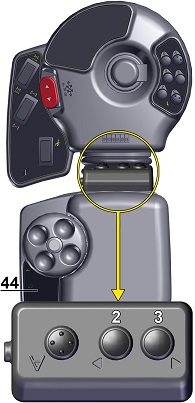
Buttons, left armrest
2 Rotation left
3 Rotation right
44 Seat release/locking
Functions
The seat is controlled by the buttons located in the switch
panel in the left armrest. Note: Power must be switched on
in the ignition.
Manual
● The seat rotates when the button 2 (◄) or 3 (►) is
pressed. When the button is released, the seat will
automatically lock in place.
Quick movement
● By double-clicking button 2 (◄), the seat turns towards
the load space.
● By double-clicking button 3 (►), the seat turns towards
the engine.
● By triple-clicking button 3 (►), the seat turns towards
the door.
During quick movement, the seat will stop and return slightly
backwards by pressing the button for the opposite direction
2 (◄) or 3 (►) for one second.
Releasing the seat lock
In the event of a fault or when the machine is de-energised,
release the seat lock by lightly pulling the belt at the bottom
of the seat. The lock will remain released and the seat can
be rotated freely for as long as the belt is pulled.
Note: Do not use excessive force to pull the belt to prevent
the brake mechanism from being damaged.

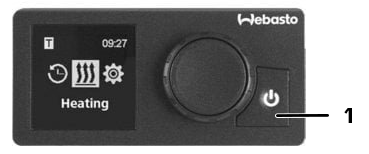
When the temperature is below -10 °C, it is recommended that the engine heater is used before starting the engine. The heater is to be used for 30–60 minutes depending on the ambient temperature.
- Starting the heater: press button 1, and the heater will start in a few seconds
- Heater shutdown: press button 1 again, and the heater will stop in a few seconds
Start the engine (see the next chapter) and allow the engine to run idle for as long as the engine heater was on in order to recharge the batteries.
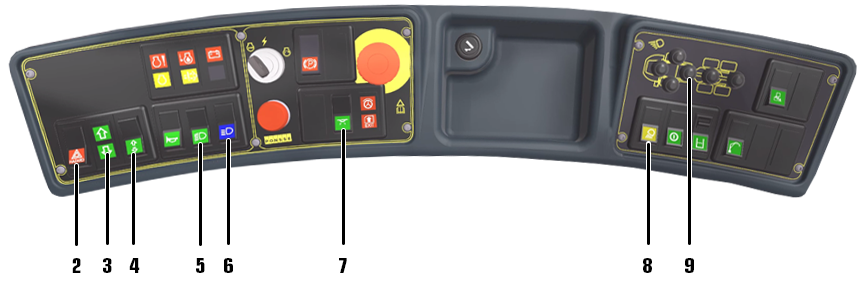
2 Emergency light
3 Turning signal indicator
4 Turning signals
5 Parking lights and headlights
- 0 = OFF
- 1 = parking lights and switch background light
- 2 = parking lights and headlights
6 Low/high beam: low beam / high beam
7 Cabin interior lights
- 0 = OFF
- 1 = interior lights with door switch to activate the lights
- 2 = interior lights (all on)
8 Working lights ON/OFF
9 Working light selector buttons

When the transmission oil temperature is below -2 °C, the machine will not move. After starting, the heating function
will be activated for roughly 10 minutes, depending on the temperature.
When the transmission oil temperature is 10 °C – (-2 °C), the transmission switches to the limited driving mode after starting. All restrictions will be removed when the transmission oil temperature has increased sufficiently high.
6.1 Normal engine stop
6.2 Emergency engine stop
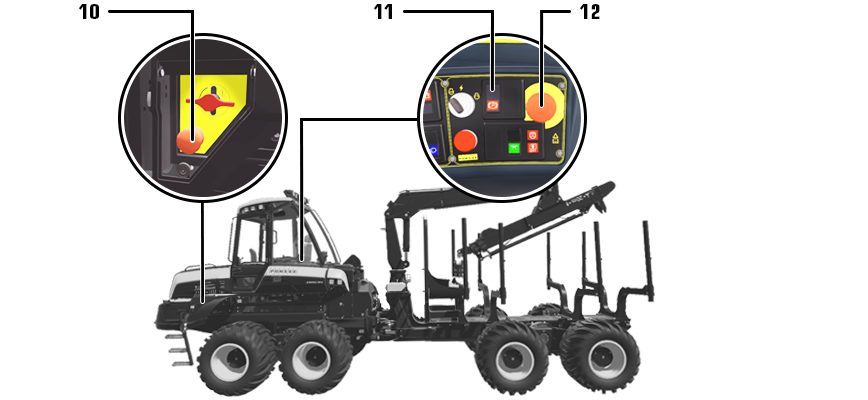
The engine stops by pressing the emergency stop push button (10/12) until it bottoms. The parking brake is activated automatically (the parking brake switch (11) remains in the OFF position), the steps are lowered. The hydraulic operations stop. The power and electric functions remain active.
The engine cannot be started when the emergency stop button is down. Release the button by turning it clockwise.
Before restarting the engine, switch the parking brake switch to the ON position.
